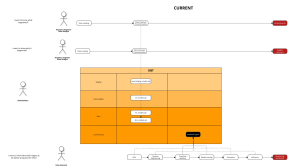Problem Statement
Briefly, we work with a company and they allow their customer to sign up for account. The company has so many branches, and one customer can open one (or more) account(s) at any branch. As a result, duplication happens, so here we are.
When signing up, we need this kind of information from a customer:
- first name
- last name
- date of birth
- phone number
Sample data:
| first name | last name | date of birth | phone number | |
|---|---|---|---|---|
| Ana | Laurel | ana_laurel@yahoo.com | 02/01/1990 | 3102105770 |
Approaches:
- Hard coding: compare each line with other, and check:
- if they exactly match → a match
- otherwise → a distinct
- Dedupe: active learning from user labelling.
- loss function: affine gap
- model: regularized logistic regression
- results
- Research new approach
- data: labelled data pairs (match pairs and distinct pairs, 40 and 460 respectively)
- idea:
- the data has 5 terms and 2 of them (name (including first and last) and email) are critical information that can be used by features such as vectorizing it (convert word to vector) to train an ML model.
- date of birth and phone number are numeric values, and can be used as well.
- steps:
- clean data
- replace NaN value in date of birth with “01-01-1800”
- remove “-” and convert to integer (“01-01-1800” → 01011800)
- replace NaN value in phone number with “99999999999”
- Vectorize:
- use
TfidfVectorizerlibrary ofsklearn - the final feature has shape of
40 * 198for match and460 * 198for distinct (quite imbalanced)
- use
- Train model and Test model: as the test data is not available right now, models are trained and tested using the same data.
- Logistic Regression:
Recall: 0.8 Precision: 0.9831932773109244
- Linear SVM:
Recall: 0.8 Precision: 0.9831932773109244

- XGBoost:
Recall: 1.0 Precision: 1.0
- Logistic Regression:
- Comments:
- XGboost seems to be overfitting, which is understandable because the dataset is small and not balanced. We can check and see if it is overfitting or not once we have a test set.
- Logistic Regression and SVM look promising. We might increase the performance by increasing the data size and feature size.
- clean data
- Reference: Colab Notebook
Lead Analytics Engineer at Joon Solutions Global
Data Analyst | Business Intelligence | BI Consultant
Latest posts by Na Nguyen Thi (see all)
- Common pitfalls in ML projects and how to avoid them. - January 5, 2024
- Data Observability with Elementary - November 5, 2022
- Data Deduplication with ML - November 2, 2022



